Drum Skins


Drum Skins
The skin is the most important component of a bodhrán. It determines the sound, the feel and the overall playability. It is the centrepiece and the part of the drum with which the player has the most intense contact.
That's why the skin is the heart of every bodhrán for me.
It is the natural skin that gives each bodhrán its unique and special character. Working with natural skins requires a great deal of experience, sensitivity and expertise, as the goat skin alone has seven different types of structure, each with its own characteristics.
The only thing that continues to ‘live on’ from a goat for decades is the skin, which is carefully selected for the intended purpose and skilfully processed with respect for the fact that it was once a living creature.
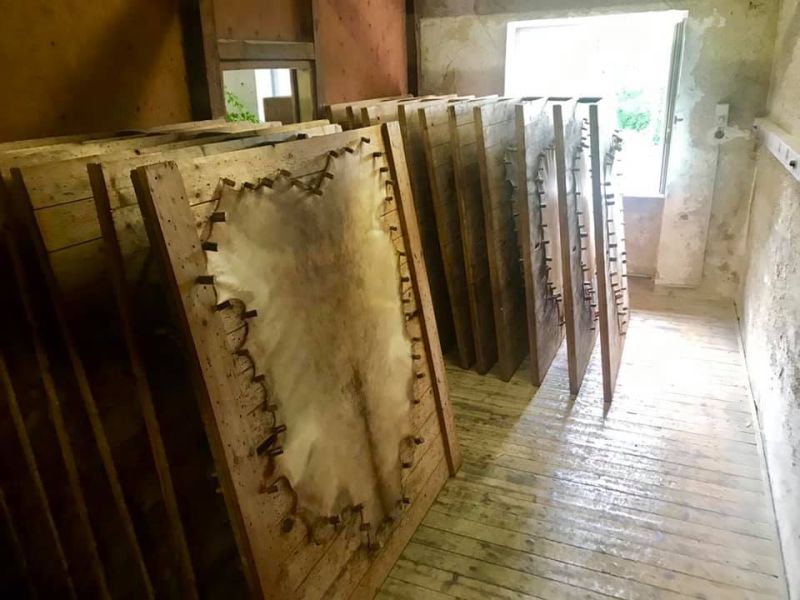
Origin
Our drumskins are manufactured by Werner Edlauer, an experienced tanner who places great emphasis on cleaniness. The company has been in the tanning industry for over 600 years.
We use bodhran skins which come exclusively from Germany, Austria and Switzerland (apart from Lambeg skin from the North of Ireland and of course kangaroo) and mostly Swiss mountain goatskins are used.
Each goat is registered with the appropriate authorities within 48 hours of birth.The animal is then ear-tagged, and is permanently checked by a vet. In this way, the authorities always know where the animal is being kept, as well as the age and state of its health. This assures that the origin of our bodhran skins can easily be traced and thus ensures highest quality skins. These procedures are of top priority for Werner Edlauer and Christian Hedwitschak as they are the first people to come in contact with the animal skins and it guarantees continuous top quality. As a result of these precautions, there is no hesitation in allowing our instruments to be used in kindergardens and schools.
The goatskins used by Christian Hedwitschak are produced exclusively for him according to his specifications.

Skin processing
The goatskins are sorted for their respective requirements, fleshed and cured according to an old well-proven traditional biological working process.
This environmentally-friendly work-procedure takes from two to three weeks. In comparison to the usual time spent on skin processing, the additional time given to our skin processing method ensures highest quality. All drum skins specified here have one thing in common: they tend to sound better and better while being played in and the sound becomes more and more balanced.
We are often being asked about the subject of „Anthrax“. Indeed in recent years, some cases of Anthrax (splenic fever) have been reported. This has been caused by incorrect handling of skins. As far as I am aware, there have been import embargos for the import of skins in certain countries or at least very strict import regulations have been applied.
This just goes to show that, as with all things, it is not only the price that matters, but above all the quality. This is especially true for such sensitive products as animal hides.
This is not to say that African goat skins are generally considered unsafe, but we like to be able to rely on the controlled origin of the goat skins.
We offer different processed skins for each of our bodhrán lines:
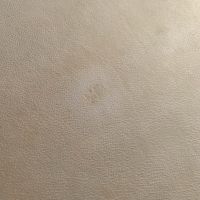
Edlauer select
Together, Werner Edlauer and Christian Hedwitschak developed special drum skins bodhráns. The Edlauer Select Premium drum skins are made especially for the CoreLine series. They are specially chosen goat skins and are produced in a unique way exclusively for Hedwitschak drums.
Christina Hedwitschak will then select the suitable skin areas for the given bodhrán model.
Characteristics of the EdlauerSelect Premium skins are: Harmonious timbre, great flexibility, comfortable surface feel, easy reaction to the skin hand with effortless tonal modulation and stable tuning in almost any climate zone.
A premium drum skin!
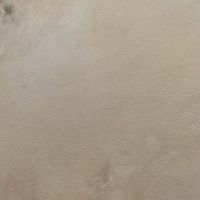
DragonSkin
DragonSkin is specially treated skin which is refined according to a special in-house treatment procedure. Only the most homogeneous and optically most attractive standard skins are selected for this purpose.
DRAGONSkin is a drum skin which has been well played-in from the very start but still has much more to offer. That special something extra which is difficult to describe in words.
The sound-character can best be described as lively, harmonious with crystal-clear highs, a creamy mid-range tone and a full bass sound. It responds easily to the slightest touch of the skin hand and offers a very wide ranging sound spectrum.
In comparison to the famous Lambeg skins from the North of Ireland, the attack is a bit softer.
DRAGONSkin is a copyright brand! (TM)
We offer three varieties of DragonSkin.
The differences between the skins may be slight as the skin selection process is carried out meticulously and each skin dervies from a series of the same goatherd.
However fundamental differences in sound and feeling do exist which should be of great interest especially to the more seasoned bodhran player.
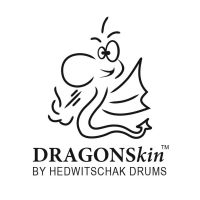
DragonSkin classic
This is he standard DRAGONSkin model with a skin of of medium thickness and hardness. This ist he most popular and universally used HighEnd model with the typically creamy sound character. Even unexperienced players are well served with this model. Designed to suit from the session to the stage from „Long-and-slender-tippers" to “Hotrods”.

DragonSkin spicy
Here we use thicker skins from older animals (3-7 years old). These are then sanded to medium thickness. This means that the portion of the harder outer skin layer is greater. In addition, the intensity of the DRAGONSkin procedure is shortened. The result is a DRAGONSkin with a harder attack, more punch even at louder sesions, but still with that creamy DRAGONSkin sound character.
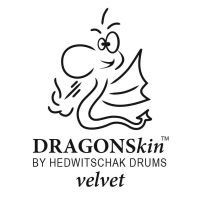
DragonSkin Velvet
A "normal" DRAGONSkin-processing procedure. However, for this model we tend to use thinner and softer skins from younger animals.These skins have a softer feel thus reproducing a softer sound. Excellently suited for "bassline players" and to accompany the voice. Likewise suitable for spirituals and shamanic techniques. However, the Velvet is not suitable as a "normal" bodhran skin, but is mostly used for TwinSkin drumheads for the inside layer.
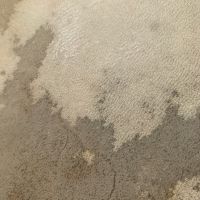
Genuine Lambegskin from the North of Ireland
These skins are made in the North of Ireland
The Lambeg skin offers excellent playing qualities: It makes playing very enjoyable because it responds easily and has a wide sound spectrum. It works great for traditional playing, but can also produce a very modern drum kit sound. The living legend on the bodhran Seamus O´Kane was the maker who made the Lambeg skin bodhrán famous.
The name is associated with the large Lambeg drums called after the actual place Lambeg.
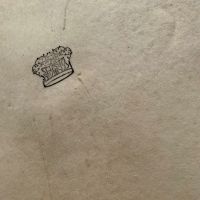
Kangaroo
Produced by our friends at KENTVILLE DRUMS in Australia.
This specially selected, cured and refined kangaroo skin makes for an excellent, lively drumhead that is both percussive and tonal.
Requires some breaking in and a bit of playing experience. The "sports car" among drumheads It's a bit crisper than a DRAGONSkin spicy, but less "vigorous" than some Lambeg skins can be. The skins are processed following centuries-old tanning traditions passed down from generation to generation.

Goak
Goak: Oak-treated goat.
An age-old recipe, newly interpreted by Werner Edlauer.
A special process involving oakwood extract gives the skin its rustic color as well as a rich, full-bodied, bassy overall sound. A bit like the DRAGONSkin classic, but a bit more… earthy.
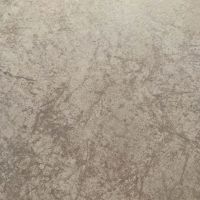
REMO Skyntone®
Extremely stable in tuning and an authentic alternative to natural skins.
If you want an uncomplicated drumhead for use on stage or for playing outdoors, or if you are a vegan - this drumhead is a genuine alternative to animal hide. If tuned correctly, this drumhead is able to impress even the most demanding listener.
Moreover, it remains virtually unaffected by climatic conditions and hand perspiration.
The Spine
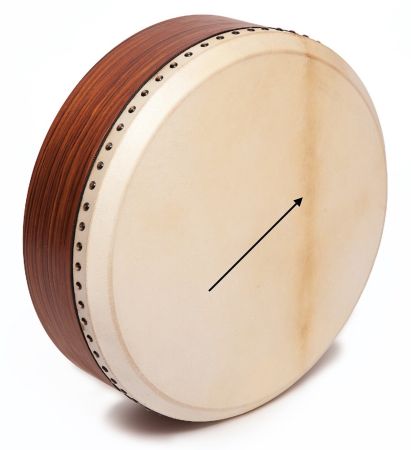
Every goat, every kangaroo, every deer has a spine.
This also stands out more or less visibly in the drum skin as a darker stripe.
Depending on the age of the animal, this stripe is more or less pronounced and thicker and harder than the rest of the drumhead.
In old male goats, the nape of the spine may well be 4mm thick, while the rest of the skin may be 0.8 - 1 mm thick. However, this is an extreme example. Such skins are only put on a drum in exceptional cases, because they are very hard and thus hardly modulable
But this example should show how different the spine can be in contrast to the rest of the drumhead and that it influences the sound behavior of the drum accordingly.
How does the spine affect the sound?
In general, evenly thick heads without a spine in the drumhead tend to sound more tonal, harmonious, tame.
The more influence the spine has on the overall sound, the wilder and more percussive the overall sound will be.
The influence of the spine is determined by the characteristics (thickness, width) of the spine and its position.
Characterization:
A wide, thick, hard spine strip makes the drumhead very wild, downright ringing.
In contrast, the spine in young animals and generally in kangaroos, for example, is usually so homogeneous and inconspicuous that it can hardly be seen. Here, the spine has little influence on the sound.
Position
A spine placed centrally on the drum (CoreLine classic, CoreLine XL) has less influence on the sound than one placed eccentrically as used on the CBss and the TrHED.
The position of the spine and the choice of head are thus used to achieve specific sound characteristics.
Since the spine area is harder, it also sounds different than the side area when played. By striking the spine directly, different sounds can be achieved. Some experienced players use this technique and therefore have very precise ideas about where to place the spine. Other experienced players, on the other hand, value a homogeneous head and do not want a spine on their drum.
examples of drumhead types and spine placements
-
CoreLine slim und bullet
relativ dünnes Fell, keine Wirbelsäule -
CoreLine universal/black
medium thick, homogeneous skin, no or inconspicuous spine -
CoreLine classic/xl
medium thick skin, central spine -
CoreLine Maxi
thicker skin, central spine -
RWE
Lambegskin, no spine -
MONss
DragonSkin spicy, no spine -
EMsig
Lambegskin, central spine -
CBss
medium thick EdlauerSelect, spine on 3/10 -
TrHED
thick EdlauerSelect, spine on 2/3
FAQ
What's the deal with the black tape on the edge of the drum?
The tape helps to harmonize the overtone behavior, and thus the drum sound, and simply makes the overall sound more defined and "rounded".
Physically, it dampens the radial lines of vibration of the drumhead, while the circular lines are not affected.
The tape Christian Hedwitschak uses is regular electrical tape. But the differences between the various types/brands are considerable. Some tapes just lay down on the skin, others have an internal tension that pulls the skin inward a bit.
Christian has tried pretty much all the different types, and also what effect it has on how deep you tape into the playing surface.
Christian Hedwitschak and myself even did sound analysis with it at the acoustics department at the University of Munich.
It also makes a difference how many layers you put and how much you pull the tape when you apply it. So it's not only a visual difference, but also a sonic difference if you use the same tape, but 12, 19 or 35mm wide.
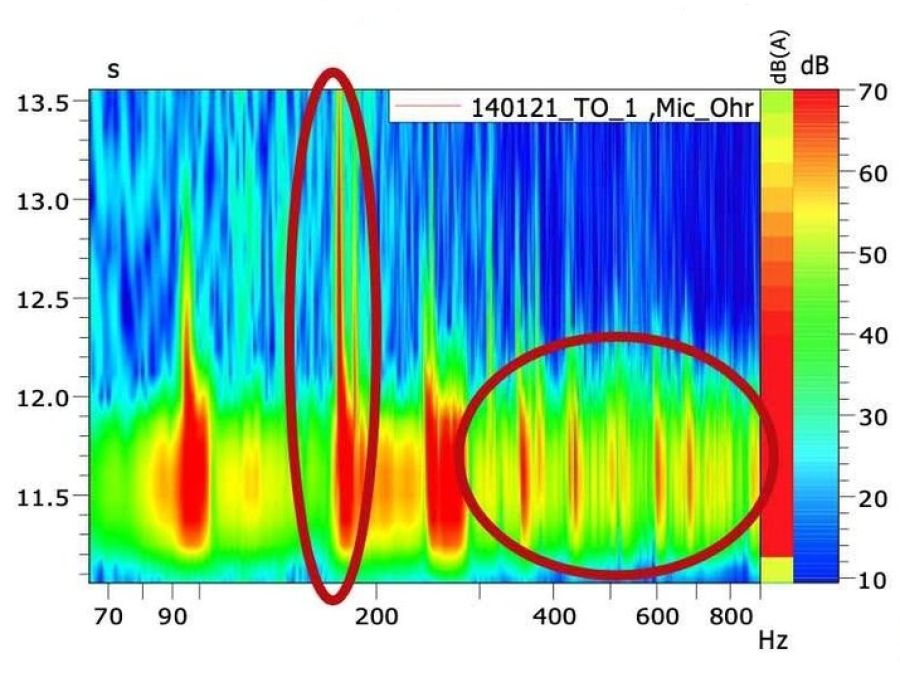
Without tape
Skin without tape clearly shows undamped peaks (outlined in red). The unpleasantly perceived frequencies 600 - 800 Hz are also present (right red outline).
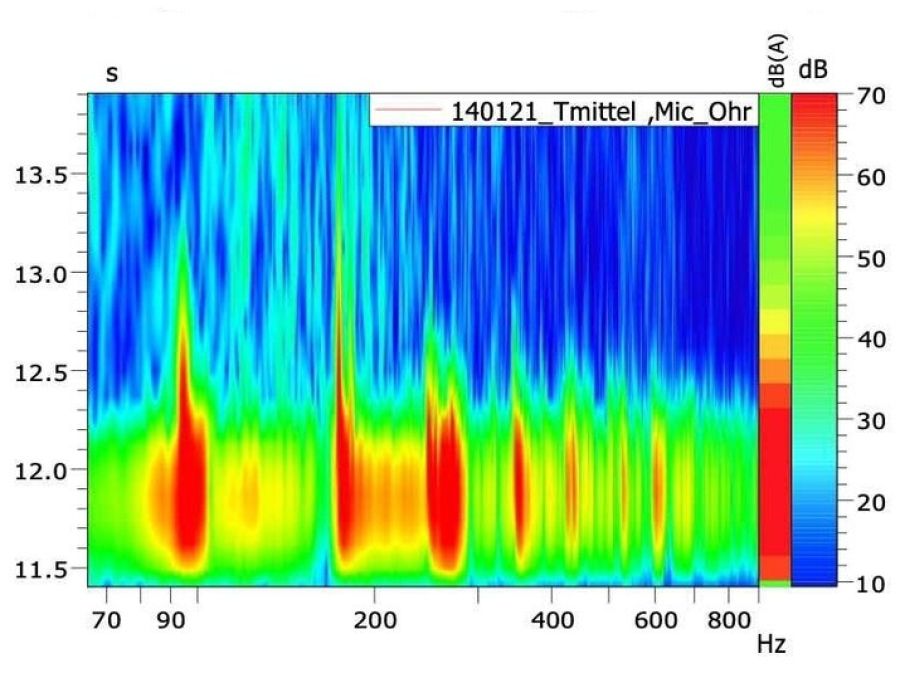
Minimal tape
Skin with less tape shows a less high peak at approx. 180 HZ, but the peaks >300 Hz remain. The skin is only partially damped.

with tape
Significantly fewer peaks, especially in the range > 300 Hz (right red outline). This is subjectively perceived as more balanced.
Oh, there is a hole in my drumskin!
Naturally we try to avoid any possible weaknesses or flaws in the skin when sorting and selecting.
It should be mentioned that there are no "running stitches" in goatskin. However, since we are dealing here with very valuable raw materials it is understandable that we are not in a position to discard of any skins which may be optically flawed.
So-called “pinholes”, (miniature pin-sized perforations with thick edges), scars, darker transparent or somewhat thinner patches on the skin are all natural features and should not be considered as a ground for complaint.
When Christian Hedwitschak uses skins with such characteristics, then only because he is convinced they are perfectly in order.
We urge you to trust in Christian's and my experience and be assured that you are in possession of a valuable natural product with distinctive characteristics.
A scarred skin is by no means a defective skin but living proof of a particularly brave goat!
What ist the lifespan of a skin?
This will depend on the treatment of the bodhran player. If the instrument is treated well, the skin can last of decades. This does not mean that the skin has to has to treated in a special way.
It is not necessary to use oils, greases or special soaps-just keep on playing and keep the skin at normal tension. One should not loosen the skin after playing and likewise one should avoid exposing the instrument to sun rays in a car at high tension.
What do I have to bear in mind? How do I care for the skin?
Caution is advised when playing in new skins as some skins have a tendency to stretch. Therefore, it is not advisable to loosen the skin completely after playing. Instead, it should simply be left at normal tension. Otherwise, it could happen that the skin tightens after a time even when the tuning system is completely loose.
Another area to watch out for is he possibility of skin wear. In particular, player who play at high tension may detect that the space between the lower point of the adjusters and the tuning rim may become bigger in time. In some cases, there is even a gap between the tuning rim and the main rim. This will be different from skin to skin. Some skins do not shown any signs of wear , some show slight signs of wear at the start, then subsequently no further wear takes place while other skins tend to wear down through the years. This is absolutely normal with natural skins and is no cause for concern. This will not have a negative influence on the overall sound.
In addition, my HighEndLine bodhráns offer the possibility to have the intermediate rim replaced. In this way, the visible gap disappears and the instrument will look like new again.
Time and experience will help the player to look after the instrument properly.
Christian Hedwitschak recommends using Camelia oil to clean the outer skin. This is a vegetable, acid-free oil available at any chemist`s.
Christian would however recommend a so-called „SkinReset" after a prolonged playing period. This can be done by an experienced player but Christian Hedwitschak also offers this service at his workshop. This involves removing the tape, detuning and relaxing the skin. The skin is then watered, dried slowly, retaped, sanded and smoothed inside using a 600 gr. sanding paper. During the procedure, the skin tightens again and becomes more homogeneous. Especially with players who mainly play in one and the same place, the skin can no longer vibrate evenly, as some areas of the skin are played more often then other areas. The ‘SkinReset’ works wonders here.
Basically one can condense all instructions on how to care for your instrument into a few simple words
Try to develop a feeling for your instrument and treat it with respect, then you will have many years of pleasure and fun with it.
Familiarize yourself with all the characteristics and peculiarities of your instrument and apply them to optimum effect when playing.

